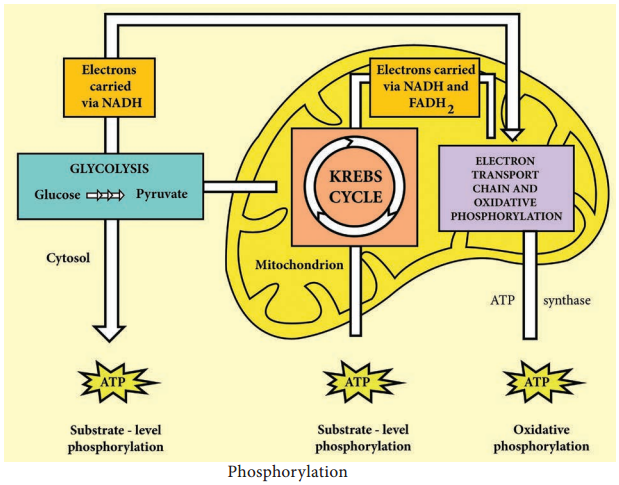Learninsta presents the core concepts of Microbiology with high-quality research papers and topical review articles.
Generation of ATP
Much of energy released during oxidation reduction reaction is trapped within the cell by the formation of ATP. A phosphate group is added ADP with the input of energy to form ATP. The addition of a phosphate to a chemical compound is called phosphorylation. Organism uses three different mechanisms of phosphorylation to generate ATP from ADP.
Substrate Level Phosphorylation
It is a metabolic reaction that results in the formation of ATP or GTP by the direct transfer of a phosphoryl group to ADP or GDP from another phosphorylated compound.
Oxidative Phosphorylation
In this reaction, electrons are transferred from organic compounds to molecules of Oxygen (O2) or other inorganic molecules through a series of different electron carriers (Example: NAD+ and FAD). Then the electrons are passed through a series of different electron carriers to oxygen. The process of oxidative phosphorylation occurs during electron transport chain (Figure 4.3).

Photophosphorylation
It occurs only in photosynthetic cells which contain light trapping pigments. Example: In photosynthesis, photosynthetic pigment, Chlorophyll is involved in the synthesis of organic molecules especially sugars, with the energy of light from the energy poor building blocks like Carbon dioxide and water. In phototropic bacteria (purple, green sulphur bacteria, Cyanobacteria), photosynthetic pigments bateriochlorophylls are involved in ATP production.